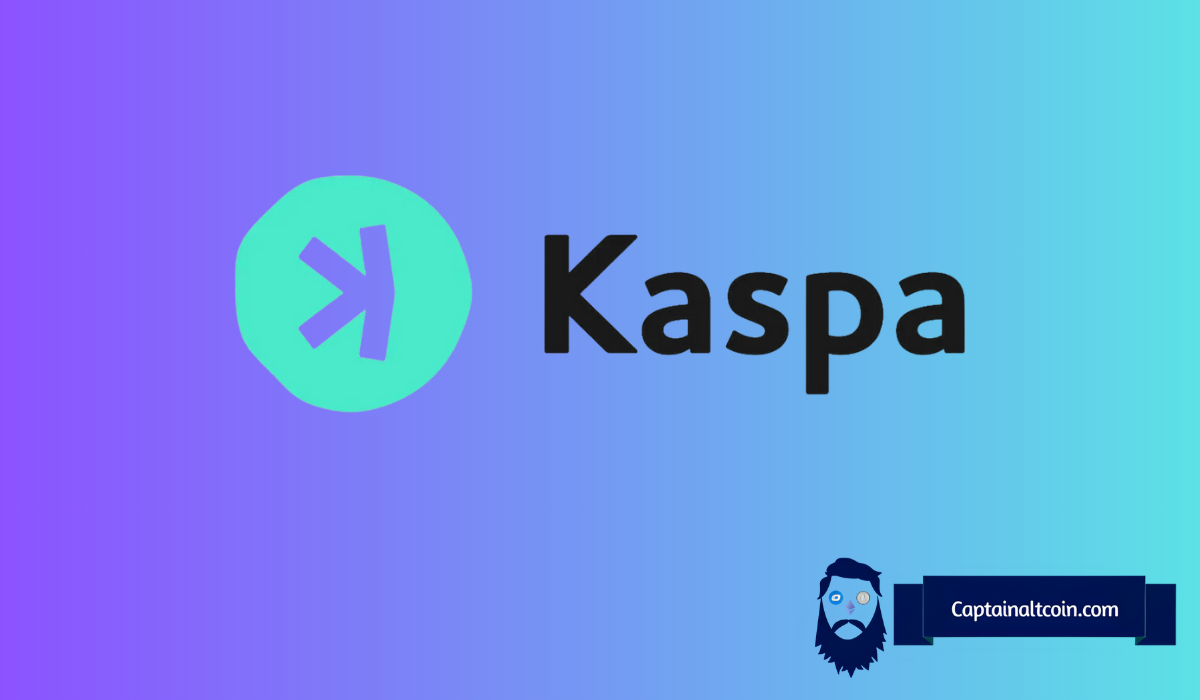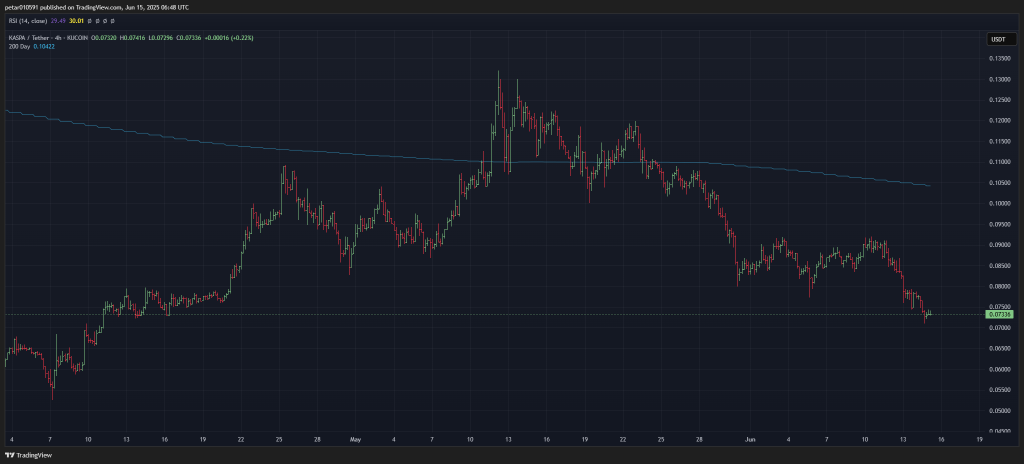Is Kaspa Price Heading Toward a 40% Crash? Experts Warn of Bearish Signs

The Kaspa price is down 15% this week after losing a crucial $0.080 support, and it’s now trading around $0.075. Even in a community known for its optimism and technical enthusiasm, anxiety is bubbling up as several worrying trends take shape.
One of the most pressing concerns involves Kaspa’s tokenomics and inflation. The network issues new tokens rapidly, thanks to fast block times and ongoing block rewards. That means a steady flood of new KAS enters the system, and critics fear that, unless demand keeps pace, this steady increase could drive prices down. The reward setup also seems skewed toward miners, who benefit most in the short term, potentially leaving long-term holders feeling squeezed.
Another issue is the lack of widespread adoption. Despite Kaspa’s impressive technologies – like its DAG structure and near-instant transaction finality – it hasn’t gained momentum in areas like DeFi, NFTs, or business integration. Even though the project has attracted developers, growth hasn’t accelerated, and the ecosystem lacks the bustling activity that typically signals long-term potential.
Liquidity problems are casting a shadow, too. Kaspa often suffers from low trading volume and price volatility, even on larger exchanges. Weak liquidity not only frightens off institutional buyers but also makes it easier for prices to swing wildly. That problem is intensified by the fact that Kaspa isn’t yet listed on Tier-1 exchanges such as Coinbase or Binance, keeping it off the radar of many serious traders.
The environment grows more challenging when considering competition and technical risk. Kaspa’s DAG-based system competes directly with established blockchains and other DAG platforms. Even though it claims security and speed advantages, some analysts remain cautious. The protocol is still relatively new and could face vulnerabilities under pressure or attack, which might shake investor confidence.
Governance and centralization concerns layer on top of these doubts. Even though the code is open-source, a small core team drives most development. That concentration of power worries some people, especially since there’s no on-chain voting system for community input. Without transparent, decentralized decision-making, broader stakeholders may feel left out or underrepresented.


When you blend these issues with the recent breakdown of key price levels, a bearish story becomes clearly visible. Losing support at $0.080 and sliding to $0.075 means more weakness ahead. If the $0.071 level fails next, prices could dip to around $0.055–$0.058 which means a further 23–28% decline. And if that slips, a drop to $0.043 becomes increasingly plausible, marking a total 40% fall from today’s levels.
On daily charts, Kaspa sits well below all major moving averages – 50, even the 200-day average – these are all “sell” indicators. Oscillator signals also confirm weakness: RSI is stuck in the low‑30s, ADX is trending down, and MACD remains negative, all pointing to bearish momentum .
In essence, Kaspa’s current position looks fragile. High inflation, slow adoption, weak liquidity, structural challenges, and centralized governance are all conspiring to create downside pressure. Unless these core issues are addressed soon, the potential for a 40% correction is not just a theoretical risk – it’s a realistically possible outcome given the current setup.
Read also: How Much Will 13,500 Kaspa (KAS) Tokens Be Worth by 2026?
Subscribe to our YouTube channel for daily crypto updates, market insights, and expert analysis.

